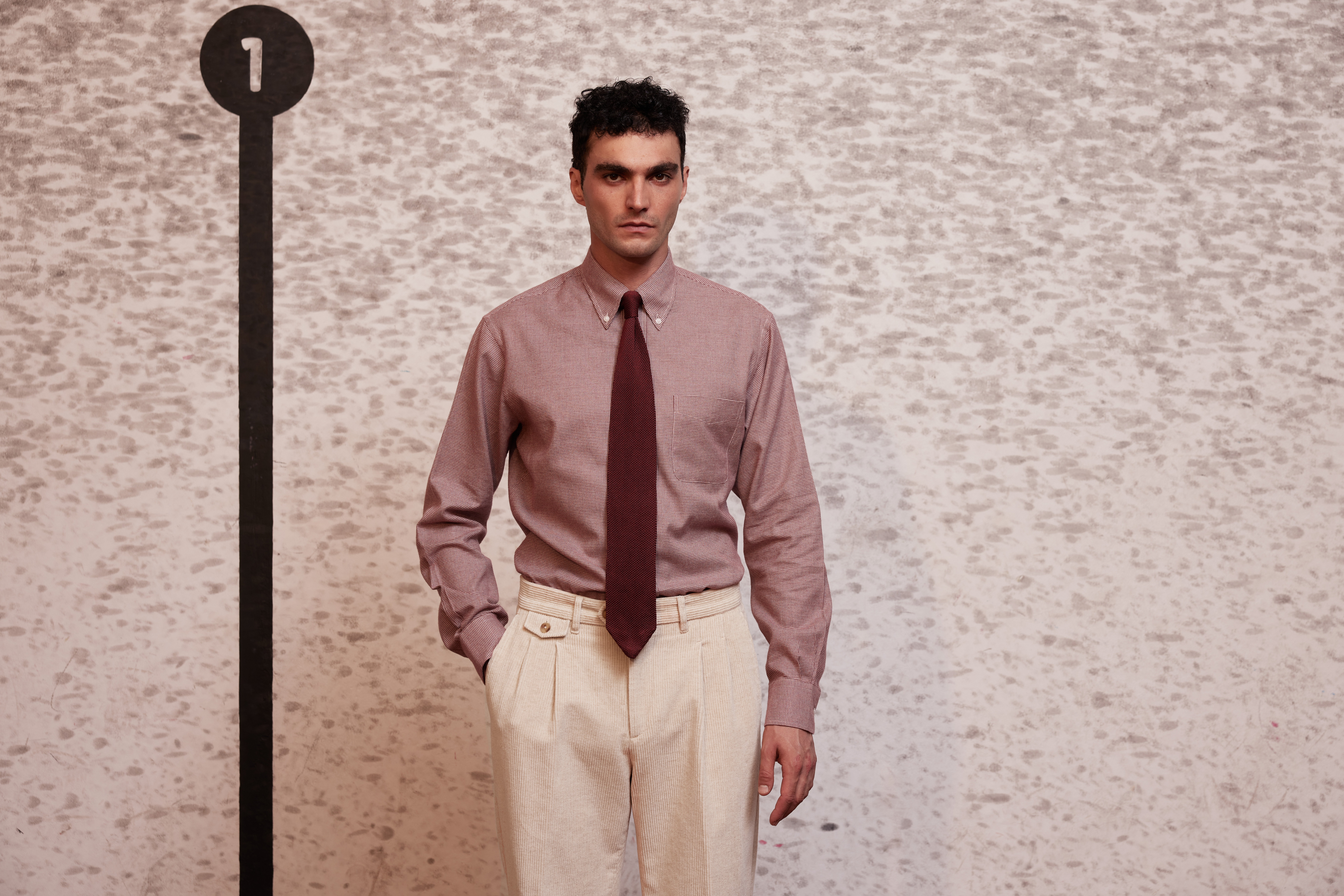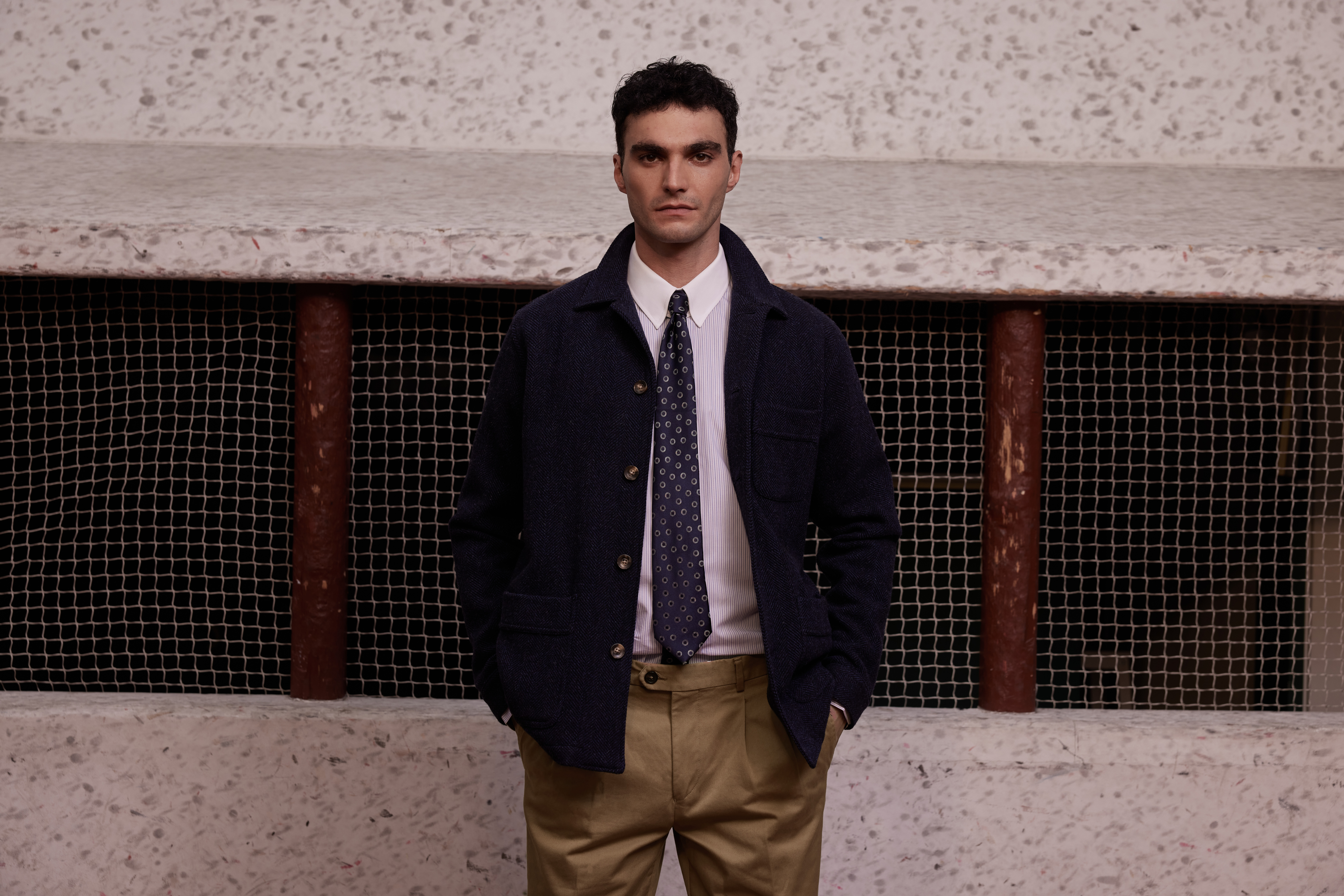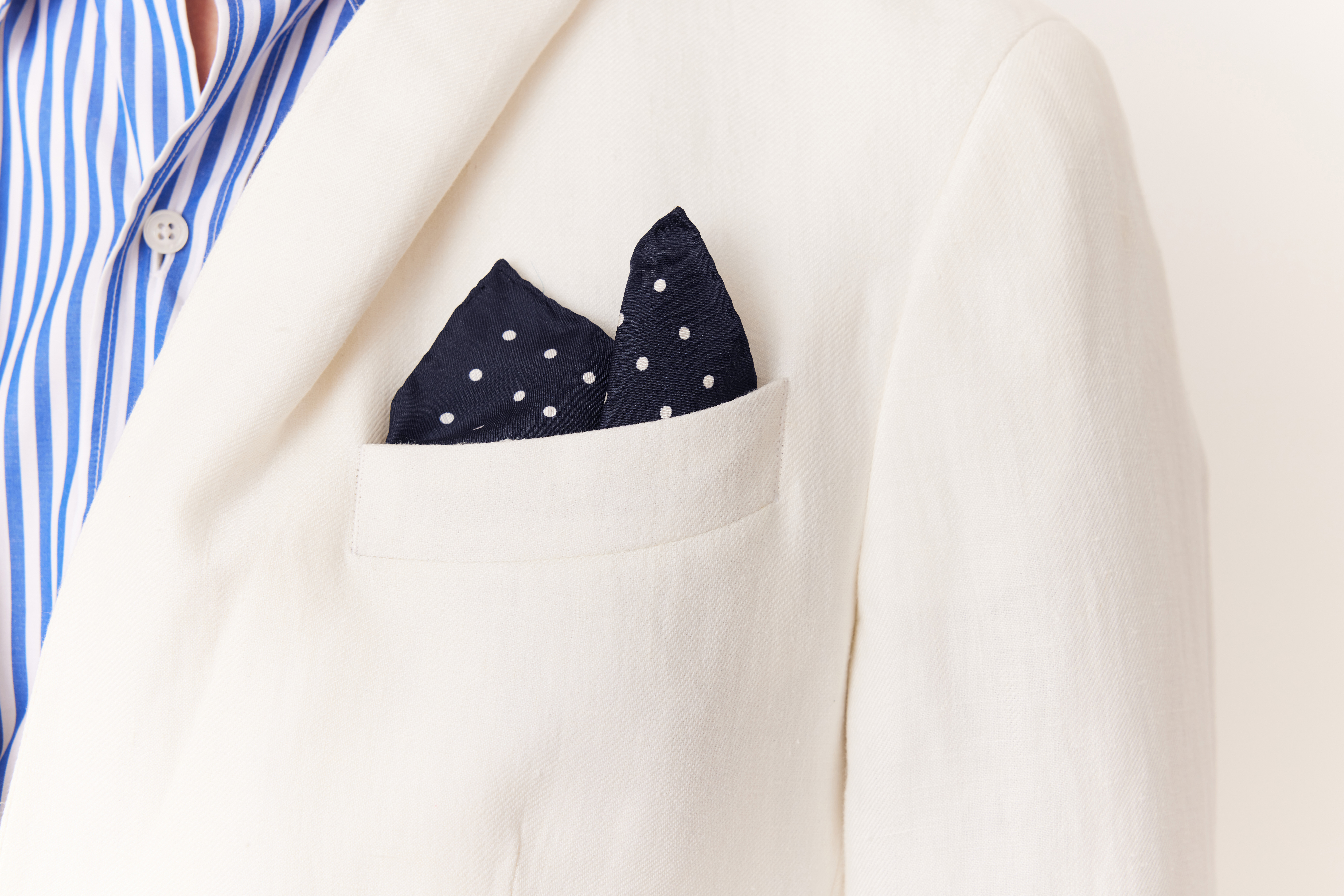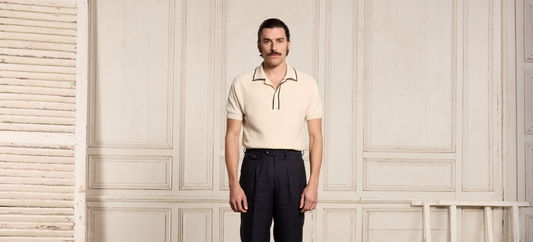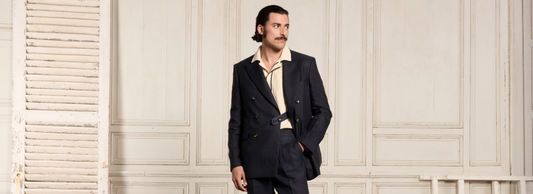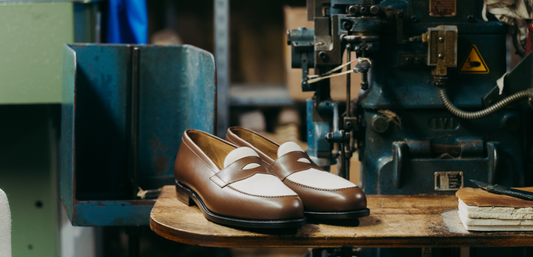A curiosity of curiosities, the tie has accompanied men for centuries without any apparent use. It does not keep warm, is not particularly practical, does not protect from anything except drafts; and it is certainly not for their comfort that these gentlemen tirelessly tie it. A stylistic incongruity if ever there was one, it asserts itself as the only wardrobe accessory displayed for its own sake , exclusively valued for its aesthetic power . No offense, a piece of fabric made indispensable by its superfluity deserved the guide that here is.
Daughter of frills and granddaughter of strawberries
If we can associate its history with the ancient Empire of China or the Roman focalium , it is to the 17th century that the roots of the modern tie seem to go back. At the time, what was still only a scarf was worn around the necks of the Croatian hussars mobilized by Louis XIII to support his troops during the Thirty Years' War.

In combat, the latter distinguished themselves by their bravery, which earned them the honors of Louis XIV upon his accession to the throne. In 1667, the latter brought together the remaining forces to build a light cavalry regiment, to which he gave the name Royal-Cravates (by distortion of the word “Croatian”). Aesthete as well as strategist, the Sun King took the opportunity to personally adopt the band of fabric of his riders. A few years later, he even went so far as to create the position of cravat maker, a squire dependent on the “Grand Master of the Wardrobe”. His role ? Choosing and adjusting the monarch's tie. A stressful job to say the least, if you ask us.

Soft, light and delicate , it gradually replaced the lace frill at Court, which itself had supplanted the imposing and uncomfortable ruff a little earlier. A strip of cotton and/or linen , generally decorated with colored ribbons, it is then tied around the neck to leave two sides hanging on either side.

Over time, the way of tying this piece of fabric evolved so much that a certain Baron Émile de l'Empesé (pen name of the serialist Émile Marco de Saint-Hilaire) published in 1827 his "Art de mise sa tie in all known and common ways, taught and demonstrated in 16 lessons.”

This anthology then listed 32 different nodes , of which only a handful remain today. And for good reason, the sophistication (and complication) of the period knots gradually gave way to the “regatta”, which truly constitutes the ancestor of those we know today. Borrowed from the world of sport and appreciated for its sobriety and the simplicity of its creation, it has continued to gain ground since the middle of the 19th century, until it has established itself as the absolute contemporary reference.

The making of Hast ties
Historical cradle of silk which has become the capital of ties , Lombardy has been able to support the evolution of this not-so-accessory accessory to modernize its practices while maintaining centuries-old know-how . Taking the train of industrialization without abandoning its rich artisanal heritage, the region of Como (in Italy) has thus established itself as one of the most expert in terms of clothing, which is why we have chosen to raise ours.
Unsurprisingly, its artisans have mastered to perfection the two major manufacturing processes that coexist today: assembly and folding.
The assembly, first of all, is the simplest and most widespread on the market. Most Hast ties are made using this method, which involves wrapping a interlining between a covering fabric (the visible side) and a lining (the body side). Also called “3-ply ties”, these are soft and simple , ideal for crowning your most formal outfits.
Folding , for its part, is a more traditional technique which allows you to make a tie from a single piece of fabric. No interlining in this case, since it is the folding of the fabric on itself which will give it its structure and hold. More expensive in material, more delicate and most often carried out by hand, this process is all the more expensive and meticulous as it has folds: 5, 7 or even 9 if you are ready to pay several hundred euros for a tie. At Hast, we stopped at 5 folds to develop our anniversary tie for our 10th anniversary , which seems more than enough to us to offer an extra level of sophistication without falling into excess.
Ties that hold their shape
If the tie is similar to a simple strip of fabric tied around the neck, its history shows us to what extent it has changed shape over time. If it seems stable to us for a century, it is partly thanks to a certain Jesse Langsdorf, a New York manufacturer who filed a patent in 1923 soberly titled “Necktie” , today considered the birth certificate of the tie. modern with its famous point.

On the market as in our wardrobe, this model largely predominates and remains both the most common and the most universally accepted (especially in the professional context). Despite more or less successful variants - very wide in the 70s and very thin in the 2000s - the average width of ties tends to stabilize around 6 to 8 cm. In any case, these are the proportions for whichwe have opted at Hast , considering them to be the most harmonious and balanced.
That being said, there is one irreducible tie that still resists the hegemony of its sister, and that is the square-end tie . More textured and generally knitted , it displays a beaded relief which evokes a rebellious spirit more than decorum. Historically associated with the working classes, who knitted them at home to appropriate the codes of a world where the quality of a man was measured by that of his tie , it took its rebellious accents from the necks of Ivy League students then to that of English mods. More modern and less formal than the "Langsdorf", the square-tipped tie therefore constitutes a choice alternative for those who want to enter this world through a less intimidating (but no less elegant) door than that of classic ties.
Colorful ties (or not)
Other parameters on which it is possible to play to place a tie - and an outfit - in this or that register: colors and patterns.
If the dark, plain tie reigned supreme over most formal dress codes , the increasing relaxation of customs has in fact reshuffled the cards in recent decades. Formerly tense, she is now freeing herself from the shackles of etiquette to conquer new territories of expression.
At Hast, it seemed important to us to quench this thirst for freedom, and we can see as proof the rich chromatic palette that we opened up to it. Alongside the dark classics, you will find beautiful shades of red , green and blue , all ready to shine where their ancestors shone with their reserve.
Above all, the patterns are making a remarkable comeback, manifestation of a desire to disinhibit a very symbolically charged accessory. From the most subtle polka dots to the most daring flowers , including a tone-on-tone Prince of Wales or a tribute to club stripes, we have put them in the spotlight in our collections, just for you.
Art and material
There's no need to make a secret of it: the material of a tie makes almost its entire appearance. Because it determines the way in which it will be worked and how it will take on the light, it should be chosen with the greatest care according to the expected result.
At Hast, these are the ones that capsized us:
- the essential silk : a natural material closely linked to fashion accessories, silk is easily identified by its shiny and satiny appearance. Noble and elegant, this generally adorns formal pointed ties, designed to accompany a two or three-piece suit. Worked in grenadine or mesh, silk displays a more assertive texture, dancing between formal elegance and casual chic.
- the combination of silk and cotton: this unusual blend combines the suppleness of silk and the stiffness of cotton for a “crunchy-gourmet” result, both to the touch and to the eye.
- the combination of wool and silk: a variant just as natural as the previous one, it combines the rusticity of wool fibers and the finesse of silk fibers to deliver a fabric of incredible richness, a thousand times proud of its roughness.
- wool: unlike grenadine which is woven, our 100% wool ties are knitted. Comparable by their beaded appearance, wool knit ties have a more lumpy structure, which inevitably draws them towards a casual register.
The crux of the problem
Ah, the first tie knots! Between the rite of passage and the unofficial entry into adulthood, they inevitably mark the end of one era and the beginning of another. Often associated with first job interviews, first jobs and/or first ceremonies, they represent much more than an exercise in address and skill. And for good reason, you don't tie your tie like you tie your shoes, which is why the first knotting tricks are usually practiced with a dad, an older brother... or with a solo tutorial.
Luckily (or not), most of the complicated techniques have disappeared in favor of the simplest of them: the simple knot, or “four in hand”.

At Hast, this is how we tie our creations together, particularly appreciating its timelessness, versatility and minimalism. If Émile Marco de Saint-Hilaire listed 32 in his work of 1827, we must recognize that few of them today would know how to display themselves without attracting ridicule.

Wear a tie in 2024
Gone are the days when the tie was an integral part of a quasi-caricatural uniform. In our humble opinion, today it is akin to an accessory in its own right, the wearing of which betrays less a social position than a style statement. Goodbye the rigidity of the “suit and tie”, hello inventiveness and creative freedom. By playing with shape, material, color and patterns, it is possible to make it say everything and its opposite, to the great pleasure of our locker rooms.
If its union with the suit seems untouchable (and so much the better), it is perfectly possible to integrate it into less formal outfits, if not into absolutely casual looks. Inseparable from the shirt, we can just as easily imagine it with a leather perfecto as with a work jacket or a bomber jacket, which offers historically wide possibilities.
If you allow us a little advice, here is one that has never been so relevant since Louis XIII: treat yourself. Dusted off, uninhibited, freed of a good part of its strict and cold imagination, the tie is more than ever to be considered as a toy, to be worn everywhere and without moderation.
The cover, a little innocent pleasure
In a word, let us now mention the case of an accessory closely linked to the tie , we have named “ the pocket square ”. From its natural habitat which is the chest pocket of the suit jacket , it brings a note of refinement where delicacy and functionality blend harmoniously. Also called a “pocket handkerchief”, its destiny is similar to that of the tie in that it is most often worked in the same material, so as to match them.
Although it comes in different ways (colors, patterns and materials) to suit all occasions, the pocket square cannot truly live outside of a suit jacket , which limits its potential and use. On the other hand, its use in a formal register is of rare elegance , and even more so when it echoes a tie of the same ilk.
To assure you, Hast pocket squares are handcrafted by the same craftsmen who make our ties. From their workshops on the shores of Lake Como, they prepare these two paragons of finesse together, which suggests absolutely sublime combinations.
A word about maintenance
Due to their delicacy, the finesse of their construction and the materials used, it is preferable to entrust the washing of your ties and pocket squares to the dry cleaner . Dry cleaning from time to time will do them the greatest good and promote their durability, it being understood that washing them in the washing machine could be fatal.


